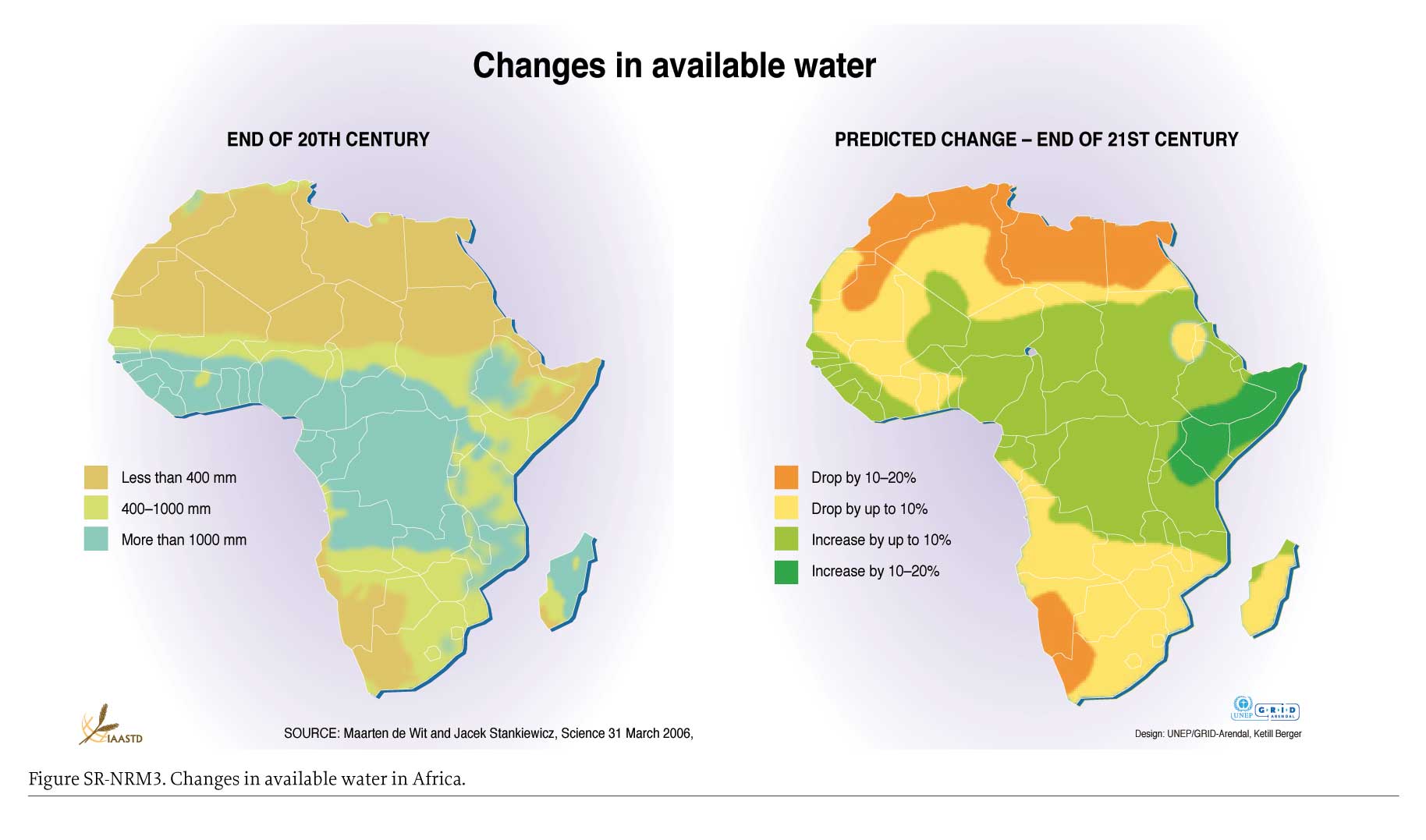
| Previous | Return to table of contents | Search Reports | Next |
| « Back to weltagrarbericht.de | ||
Themes: Natural Resources Management | 61

Figure SR-NRM2. Changes in available water in Africa: end of 20th and 21st centuries.
sidies and tariffs promoting non-sustainable practices, etc. Some proven technologies for mitigating land degradation include improved land husbandry, use of artificial and natural fertilizers, diversification and rotation of cropping systems, minimum or no-tillage, contour hedges, plowing, terracing and agroforestry practices, organic and conservation farming [CWANA Chapter 2; ESAP Chapter 5; Global Chapter 3; LAC Chapter 1; SSA Chapter 5]. |
|
lizer applications. The salinity problem can be reduced by minimizing irrigation application, and lowering water tables by appropriate tree planting, drainage systems; while acidification can be reduced by liming and addition of organic residues [Global Chapter 3; LAC Chapter 4]. |

Figure SR-NRM3. Annual global cereal production/annual global application of N (Source: Tilman et al., 2002).
| Previous | Return to table of contents | Search Reports | Next |
| « Back to weltagrarbericht.de | ||